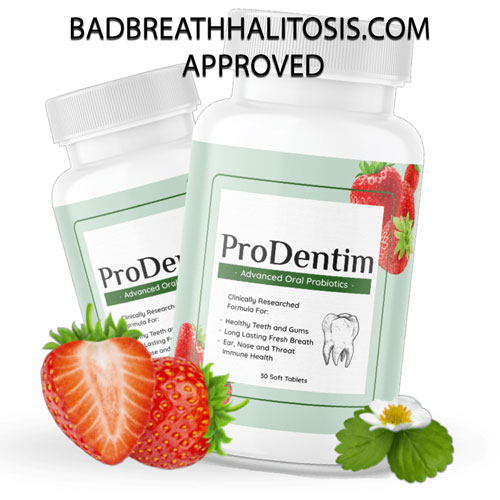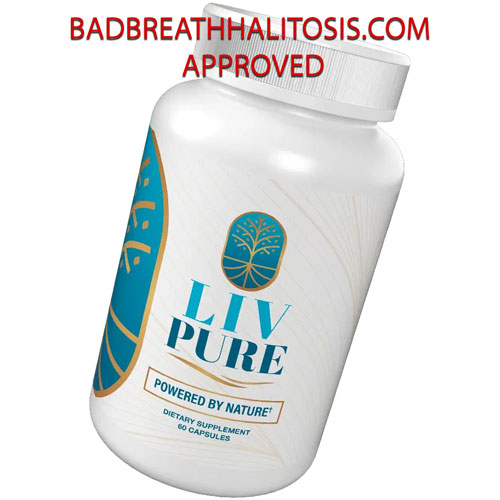http://halita.dentaid.nl
Anybody knows this product ?
And what are the experiences ?
(I have my doubts !)


HALITA
Re: HALITA
What language is that?JZ wrote:http://halita.dentaid.nl
Anybody knows this product ?
And what are the experiences ?
(I have my doubts !)
Anyway if it contains Chlorine Dioxide im keeping well claer!
Re: HALITA
It's Dutch n00bfindacure wrote:What language is that?JZ wrote:http://halita.dentaid.nl
Anybody knows this product ?
And what are the experiences ?
(I have my doubts !)
Anyway if it contains Chlorine Dioxide im keeping well claer!
Clinical effects of a new mouthrinse containing chlorhexidine, cetylpyridinium chloride and zinc-lactate on oral halitosis. A dual-center, double-blind placebo-controlled study.
Winkel EG, Roldán S, Van Winkelhoff AJ, Herrera D, Sanz M.
Clinic for Periodontology Amsterdam, de Boelelaan 589, 1082 RM Amsterdam, The Netherlands. [email protected]
OBJECTIVES: The aim of this double-blind, parallel study was to test the clinical efficacy of a newly developed mouthrinse in the treatment of oral halitosis in patients without periodontitis. MATERIAL AND METHODS: Forty volunteers, recruited in two centers, participated in this study. Patients were selected on the basis of (1) halitosis of oral origin, (2) full-mouth organoleptic score>1, using an arbitrary 0-5 scale, (3) level of volatile sulfur compounds (VSC)>170 parts per billion (ppb) and (4) Winkel tongue coating index (WTCI)>4 (0-12). Intervention included gargling with a mouthrinse containing chlorhexidine (0.05%), cetylpyridinium chloride (0.05%) and zinc-lactate (0.14%) or with a placebo mouthrinse without active ingredients. At days 0 and 14 clinical variables were assessed in order of performance: (1) organoleptic assessments, (2) levels of VSC, and (3) WTCI. RESULTS: Treatment with the active mouthrinse resulted in a significant mean reduction in the organoleptic score from 2.8 to 1.5 (p<0.005). In the placebo group, no significant reduction in the mean organoleptic score occurred. Consequently, this resulted, after 2 weeks, in a greater change of the organoleptic scores in the test group in comparison to the placebo group (p<0.005). The mean VSC scores were reduced from 292 to 172 ppb in the test group (p<0.005), whereas no reduction was observed in the placebo group. At the 2-week examination, the mean change of the VSC scores in the test group was significantly greater than the mean change in the placebo group (p<0.005). Neither in the test nor in the placebo group a significant reduction in tongue coating was observed. CONCLUSIONS: In conclusion, the tested mouthrinse is effective in the treatment of oral halitosis.
PMID: 12694427 [PubMed - indexed for MEDLINE]
http://www.ncbi.nlm.nih.gov/sites/entre ... stractPlus
Winkel EG, Roldán S, Van Winkelhoff AJ, Herrera D, Sanz M.
Clinic for Periodontology Amsterdam, de Boelelaan 589, 1082 RM Amsterdam, The Netherlands. [email protected]
OBJECTIVES: The aim of this double-blind, parallel study was to test the clinical efficacy of a newly developed mouthrinse in the treatment of oral halitosis in patients without periodontitis. MATERIAL AND METHODS: Forty volunteers, recruited in two centers, participated in this study. Patients were selected on the basis of (1) halitosis of oral origin, (2) full-mouth organoleptic score>1, using an arbitrary 0-5 scale, (3) level of volatile sulfur compounds (VSC)>170 parts per billion (ppb) and (4) Winkel tongue coating index (WTCI)>4 (0-12). Intervention included gargling with a mouthrinse containing chlorhexidine (0.05%), cetylpyridinium chloride (0.05%) and zinc-lactate (0.14%) or with a placebo mouthrinse without active ingredients. At days 0 and 14 clinical variables were assessed in order of performance: (1) organoleptic assessments, (2) levels of VSC, and (3) WTCI. RESULTS: Treatment with the active mouthrinse resulted in a significant mean reduction in the organoleptic score from 2.8 to 1.5 (p<0.005). In the placebo group, no significant reduction in the mean organoleptic score occurred. Consequently, this resulted, after 2 weeks, in a greater change of the organoleptic scores in the test group in comparison to the placebo group (p<0.005). The mean VSC scores were reduced from 292 to 172 ppb in the test group (p<0.005), whereas no reduction was observed in the placebo group. At the 2-week examination, the mean change of the VSC scores in the test group was significantly greater than the mean change in the placebo group (p<0.005). Neither in the test nor in the placebo group a significant reduction in tongue coating was observed. CONCLUSIONS: In conclusion, the tested mouthrinse is effective in the treatment of oral halitosis.
PMID: 12694427 [PubMed - indexed for MEDLINE]
http://www.ncbi.nlm.nih.gov/sites/entre ... stractPlus
Elliott,elliott wrote:are you THE real JZ? You have BB too?
Yes, I am JZ and have BB too.
I suffer from BB since my childhood.
I already used about 8 bottles of halita and have not experienced improvement yet.
For about 20 euro a bottle.
Thats why I want to know what other people think of this product.
If a read the report of the scientific research then it have to work.
But I have realy my doubts about it.
One of the docs who promotes this product said in a forum that we perhaps use it wrong. You must gargle it with stuck out tongue during 1 minute.
Halita has not strong taste.
So I think it never can work because if you look deep in your throat at the back of your tongue then you can see what it has to remove.
I think that we need a more mechanical cure instead of a mouth or throat water.
really. You mean like the coating on your tongue? Is there any way you could upload a pic?JZ wrote:Deep down my throat I see a thick harsh white coating when I look with a little dental mirror.elliott wrote:what do you "see" when you look down your throat?
Mine is just pink, but is still allegedly "cryptic".
Yes something like that, but I think its harder (more difficult to remove).elliott wrote:really. You mean like the coating on your tongue? Is there any way you could upload a pic?JZ wrote:Deep down my throat I see a thick harsh white coating when I look with a little dental mirror.elliott wrote:what do you "see" when you look down your throat?
Mine is just pink, but is still allegedly "cryptic".
I will try to make a picture but its very difficult to do this with a dental mirror in your hand.
Light is also a problem deep in your throat.
The best is a fiber camera thru the nose what the ENT´s use.
One time when an ENT looked at my throat with a fiber camera I heard him (soft) saying: "I don´t gone start on that" But you know they never speak straight to you what the problem is.
